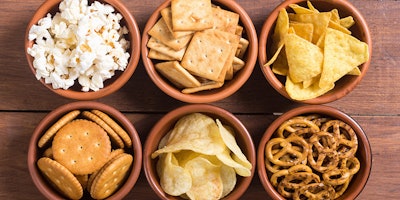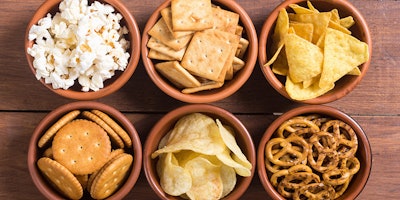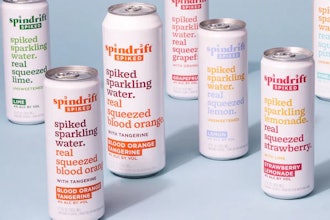
 Megan Ray Nichols
Megan Ray NicholsTo stay relevant, snack food manufacturers must continually adapt to the changing tastes of consumers. In 2018, the landscape has changed for food manufacturers. To keep pace with the fluctuations, snack manufacturers must alter their offerings to fit the public's tastes.
Health Creates Wealth in the Snack Industry
Health has become an intense driver in numerous industries. The snack industry, which people once accepted as offering occasional treats, now must cater to a public that wants healthier choices at all times of the day. With innumerable diets consumers follow, label claims about health are more important than ever. Manufacturers could miss out on certain demographics by not labeling all the health benefits of their snacks.
Even basic foods such as breads, chocolate and cereal are now made with a healthier bent to their ingredients. Bread maker Orlando Baking created its True Grain line with the assistance of nutrition experts from the Cleveland Clinic. This bread has probiotics baked in to improve consumers' digestive health. With probiotics in yogurt and cereal, bread is the next food to add these healthy bacteria to increase the healthfulness of the product.
Consumers Demand Portability
Portable snacks are now an essential option for manufacturers to offer. Even fruits and vegetables are not immune to the need for portability. Producers have changed their packaging to provide smaller, snack-sized packages of ready-to-eat carrots, apples, grapes and more. These portable snacks account for $1.1 billion in sales in the United States, increasing the amount by 10 percent in just four years, from 2012-2016.
Portability combines consumers' need for fast, easy meals with their increased snacking needs. Healthy and portable are the two attributes that create the epitome of what consumers desire in their snacks.
Nuts and Seeds Are Increasingly Popular
While the amount of chips and pretzels people eat have remained stagnant, nuts and seeds have increased dramatically. Since 2010, per-person consumption of nuts and seeds has doubled. Traditional snack sellers need to rethink their potato chips, tortilla chips and pretzels.
Perhaps the changing role of snack foods is the basis for this shift. Many consumers replace meals with multiple snacks or look for small, on-the-go meals. Nuts and seeds offer protein and fiber that chips don't. New products such as Peatos satisfy the craving for unhealthy cheese curls with a healthier pea-protein-based snack.

The Holy Grail of Cheese
Cheese, long known as a fat-filled yet tasty food, remains a part of the American snacking repertoire. Today's snackers, though, want the flavor of full-fat cheese without as much fat. Not only do they require lower-fat cheese with the same taste, they also expect other health benefits from it.
Lower sodium levels, freshness, portability, organic milk and healthier milk sources all can increase sales of cheese snacks, as these meet consumer demands. For instance, Jarlsberg Cheese created individual low-calorie wheels of its low-fat cheese. On the packaging, it touts its gluten-free and lactose-free benefits. Tillamook added portable cheese sticks to its line of all-natural, premium cheeses. These companies are among those that embrace perfecting cheese snacks.
Snacks Go Beyond Just Healthy
Healthy snacks have changed. Once fruits and vegetables were considered healthy snacks, but today's consumers demand snacks based on more personalized health needs. Consumers now choose foods that offer benefits for their brain, based on a principle called neuro-nutrition.
Additionally, biohacking has become the latest way of selecting the healthiest foods. This method uses foods as ways to heal and prevent problems discovered through DNA testing. To fulfill these new healthier categories, half of the products sold around the world claim some health benefits.
The healthy label includes making specific claims about nutritional benefits. It also embraces the clean, vegan, gluten-free or allergen-free diets many follow. In just five years, natural and organic snacks produced doubled in response to consumers' desires for healthier foods.
Time Is of the Essence
Consumers seem more pressed for time now than ever. That drives their desires for portable snacks. It also encourages them to opt for online grocery shopping. Store pickup and home delivery keep people from shopping directly in stores. This could reduce the number of impulse buys, which would be a problem for the snack industry. In the U.S., 68 percent of savory snack buys at convenience stores were impulse purchases. With fewer consumers in stores, this number could drop.
Additionally, the need for speed in stores prompts consumers to opt for the self-checkout lanes. That lessens their time next to the snacks in the checkout lines, reducing impulse buys. Snack makers need to rethink their approach to product placement. Targeted ads in online shopping venues and more places around the store for impulse buys could help ease these problems.
Overcoming Challenges for 2018
While the snack food industry faces the challenges of offering healthier foods this year, next year will provide new hurdles. To keep your company operating for years to come, you need to stay on top of the latest trends and deliver what consumers want. Future trends tend to emerge from existing ones, making it easy to follow consumers' leads. If you haven't already, make 2018 the year you begin to really listen to your customers and respond to their snacking needs.






















